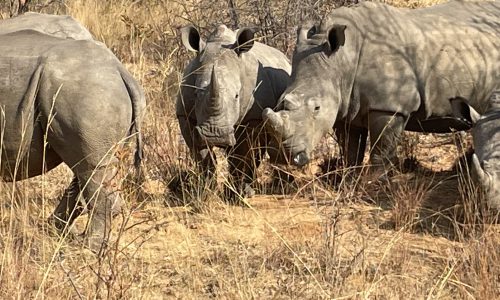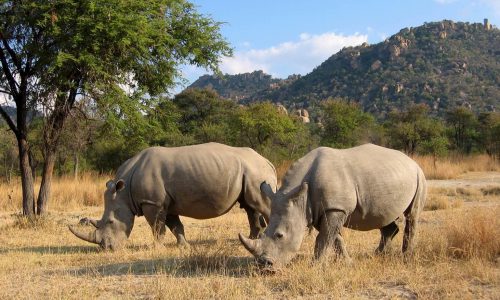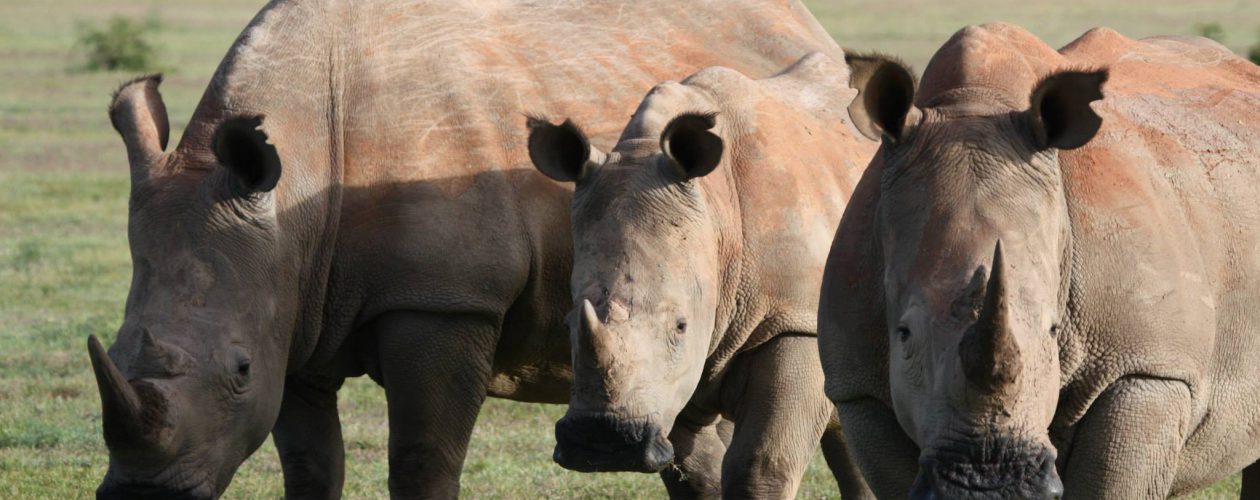 It’s World Rhino Day on the 22nd of September and while unfortunately poaching still appears to continue unabated, we did receive some lovely news that Kenya‘s total rhino population has increased from 1,258 rhinos at the end of 2017 to 1,739 rhinos by mid-2021. Despite the good news, Kenya is also home to the world’s only remaining Northern white rhino. Following the death of the last male Sudan in 2018, mother and daughter Najin and Fatu became the last remaining Northern white rhinos in the world.
It’s World Rhino Day on the 22nd of September and while unfortunately poaching still appears to continue unabated, we did receive some lovely news that Kenya‘s total rhino population has increased from 1,258 rhinos at the end of 2017 to 1,739 rhinos by mid-2021. Despite the good news, Kenya is also home to the world’s only remaining Northern white rhino. Following the death of the last male Sudan in 2018, mother and daughter Najin and Fatu became the last remaining Northern white rhinos in the world.
Rhinos have roamed the earth for more than 50 million years but now walk around with a price tag of about $180,000 on the end of their noses. Both the Black and White Rhino are among the rarest big mammals in Africa, and certainly the least common of the “Big Five“. Some of the best places to see Rhino include: Kruger National Park (and surrounds), Madikwe, and Eastern Cape Reserves in South Africa; Hwange and Malilangwe (Zimbabwe), Lewa and Lake Nakuru (Kenya), and Etosha (Namibia).
- There are thought to be 29,000 rhinos left in the world, ±23,000 of which live in South Africa. Only around 5,000 of those are Black rhino.
- Over 300 rhinos were poached in South Africa in 2020.
 Marking the 6th consecutive year that poaching has decreased.
Marking the 6th consecutive year that poaching has decreased. - Rhino horn has been used in traditional Chinese medicine for centuries, it is thought to cure a number of ailments from fevers to gout, and these days it’s rumored to help cure cancer
- The main markets for rhino horn include China, Vietnam and Thailand where the upcoming middle classes can afford to spend more on traditional medicine.
- Asia only has 3,500 rhino left (no surprise given the local demand)
More Fun Facts …
- The white rhino derives its name from the Dutch
 “weit,” meaning wide — a reference to its wide, square muzzle adapted for grazing
“weit,” meaning wide — a reference to its wide, square muzzle adapted for grazing - Rhinos have three toes on each foot
- A group of rhinos is called a crash
- Oxpeckers eat the ticks off a rhino’s hide and also warn of danger
- A charging rhino can reach speeds of 35 mph
- A rhino’s horn is made of keratin, the composite is similar to a horses hoof
- Man is the rhino’s only natural predator
- Rhinos have roamed the earth for more than 50 million years
- Female rhinos are pregnant for 15-16 months

How You Can Help
